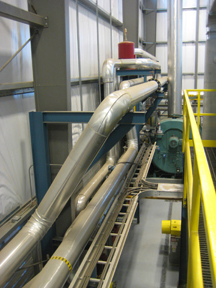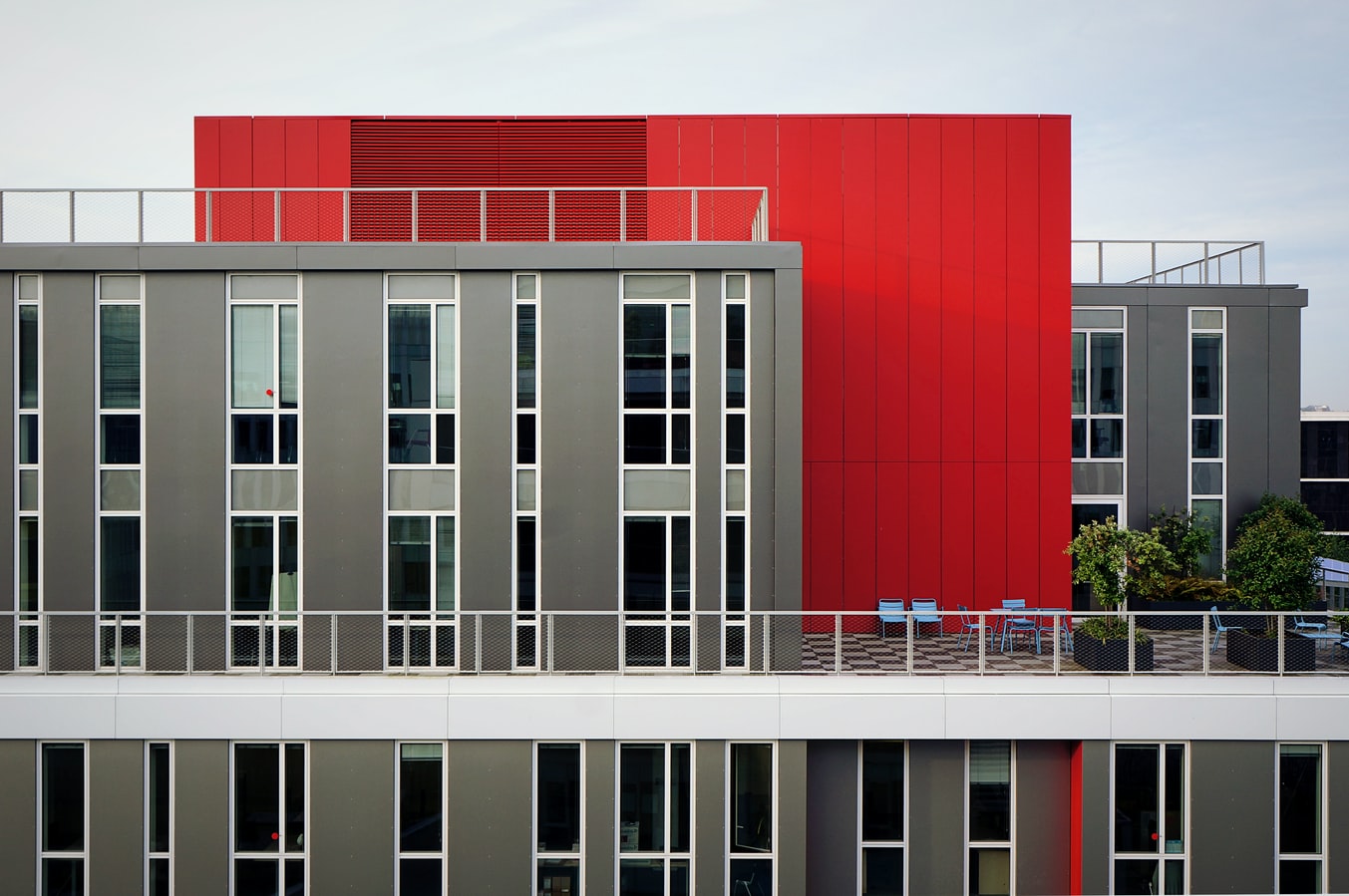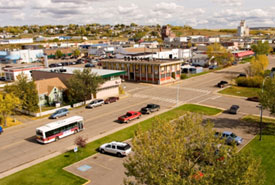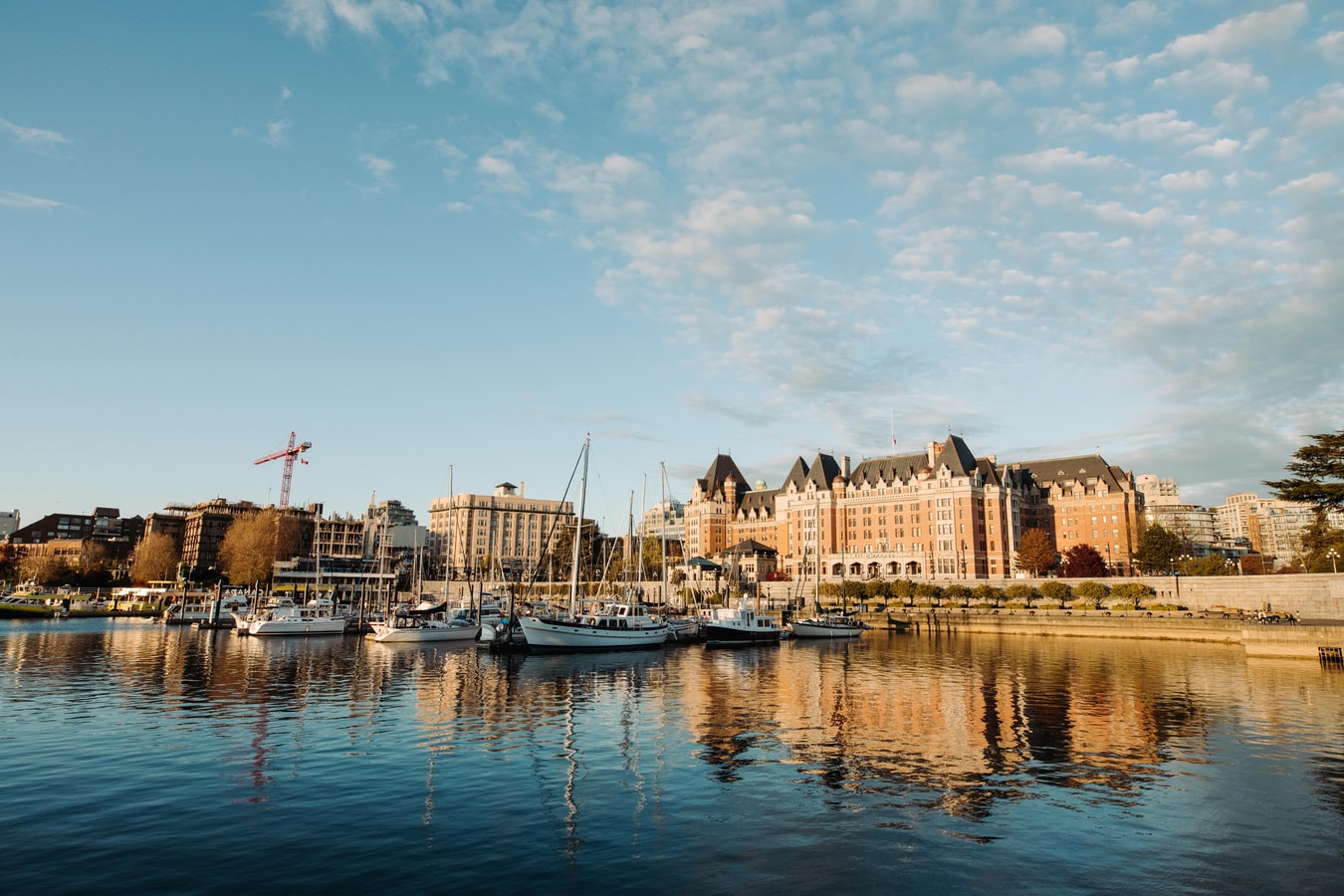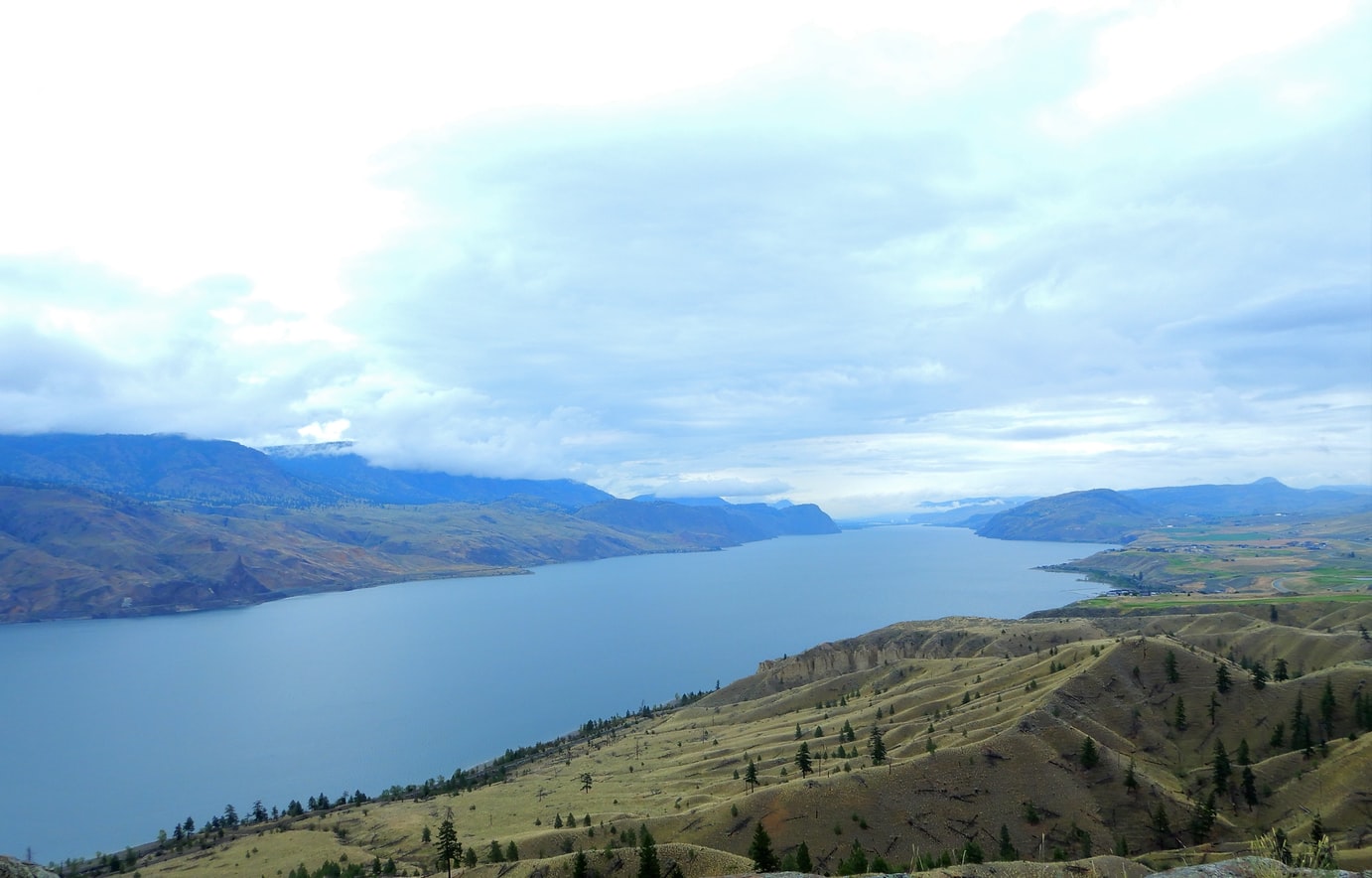Using zoning bylaws for climate action
Zoning bylaws define how specific areas of land can be used. For example, land can be zoned for residential, commercial, industrial or recreational. Zoning bylaws can also specify the nature of these uses in more detail (eg. multi-family residential, mixed residential) and regulate characteristics such as lot size, placement, density and height of structures.
Zoning shapes smart land use by implementing sustainable land use policies set out in the Official Community Plan and Regional Growth Strategy. The rezoning process is a powerful tool local governments can use to take climate change action. Nearly all of British Columbia’s communities use zoning, although some exceptions do exist. Local government’s core zoning authority is set out in the Local Government Act.
Climate Action through Zoning
Zoning can play a strong role in developing a compact and complete community, to the extent that directly impacts GHG emission and energy use in the following ways:
- Lower emissions from transportation: Zoning for concentrated development and mixed land uses means shorter distances among residents’ destinations – work, home, shop, play – that are accessible by walking, cycling and transit.
- Lower emissions and lower energy requirements by buildings: Compact and connected built form uses less energy and facilitates alternative energy systems.
- Creating incentives for green development: Zoning can include density bonuses which encourage good practices and design by using incentives.
In addition to direct climate benefits, co-benefits of zoning for complete and compact land use are:
- Strengthened local economy
- Convenient access to goods and services
- Improved human health through reduced air pollution and more active transportation
- Reduced infrastructure costs and lessened property tax burden
- Increased housing choices that meet changing demographics and demand
- Cut costs on rising energy expenditures
Learn more about land use and transportation.
Diverse Zoning Strategies for Diverse Communities
Approaches that can be combined for infusing a zoning bylaw with climate action strategies include:
- A comprehensive review of the zoning bylaw with the goal of integrating regulations and incentives to support smart land use and buildings
- Zoning bylaw amendments for high-priority strategies like more housing choice, transit-oriented development, protecting agricultural lands, and low carbon building features.
- Incremental changes with the goal of advancing climate action objectives
More Housing Choice
Single detached housing comprises the single biggest infrastructure component of most BC communities.[1] New zoning classifications or changes to existing categories can broaden the permitted housing types in existing areas, maximizing the return on infrastructure investment while reducing emissions and energy use.
With a combination of strategies that includes infill housing, smaller lots, and secondary suites, benefits of compact communities can be realized, including viable local shops and improved transit service.
For example, bus service can generally be justified with a residential density of as low as 10 units per acre which translates to 50-by-120 foot residential lots with a duplex or secondary suite on 50 % of the lots, and single-family house on 50 % of the lots [2]. Frequent bus service can be supported with a mix of low-rise apartments, townhouses, and small-lot single-family.
Infill: More Housing Choices in Existing Single Family Areas
- Identify locations where infill will improve the neighbourhood, e.g. front/back duplexes on ½ block can improve the look of both streets and make them safer with “eyes on the street”
- In existing single-family areas, zone for medium-density housing where opportunities exist. For some ideas on how to build more support for infill, see A Guide to Green Choices.
- Zone for ground-oriented dwellings with street entrances (e.g. duplex, triplex, fourplex, row house, townhouse) and ensure their design and character (see Development Permit Area Guidelines) is complementary, and retrofit the neighbourhood to be more compact.
- To encourage infill, local governments can strategically pre-zone key sites to provide certainty for developers and catalyze infill, while also ensuring that amenities and infrastructure upgrades from new development will be secured.
Small Lot Zones
- In areas that are contiguous to existing single family neighbourhoods and areas identified for infill, zone to permit lots that are smaller than standard single family lots. If desired, small lot zones can be created with incentives for building duplexes (instead of single family) and secondary suites to further increase density.
- Smaller lots yield more units per hectare, and can lower costs for single family lots.
Secondary Suites
Many local governments support secondary suites, which comprise 34% of the BC rental stock. A secondary suite is additional to the principal dwelling unit on a lot. The suite is often allowed in the principal dwelling (e.g. single family, duplex, townhouse) and some local governments allow a suite to be located in an accessory building (Garden Suite, Granny Flat, or Coach House). Secondary suites are an opportunity to offer more housing choices in neighbourhoods, while maintaining “single-family” character. Typically, 20% of single-family homes in BC already have a suite, legal or not.
Considerations for crafting zoning to allow secondary suites include:
- Zones in which secondary suites are allowed – single family, rural, townhouse, etc., and lot requirements (size, parking)
Process to legalize existing suites - Maximum gross floor area and size of secondary suite, proportionate to the principal dwelling
Density Bonus if a secondary suite is included in construction, e.g. exclude suite floor area from floor area ratio calculation - Utility fees that reflect a suite’s additional use of infrastructure
- Management of perceived traffic and noise impacts, and management of suites
Creativity with Comprehensive Development Zones
Comprehensive development zones (CD zones) are ‘one of a kind’ zones, usually created when rezoning larger sites and a mix of proposed land uses that do not match up with existing zones. Climate action opportunities include:
- Creative negotiation between the local government and developer to create a feasible development plan that meets local climate action objectives (e.g. neighbourhood parkland, access to waterfront, tree retention, innovative stormwater management, energy-efficient building forms and systems, and transit oriented development. Specific commitments for contributions can be secured with separate agreements connected to rezoning approval, inclusion in the CD zone, or density bonusing.
- Detailed and unique zoning regulations (e.g. street pattern, land use) to shape development to its context; e.g. connect new development to active transportation routes and transit. [3]
- Cluster development: Concentrate buildings and site disturbance on one part of the property, and leave a more environmentally sensitive remainder undisturbed or rehabilitated. A compact pattern creates a compact form to make active transportation routes and transit connections work, and may also increase opportunities for alternative energy and more efficient buildings. [3]
Zoning for Transit Oriented Development and Active Transportation Choices
- Transit oriented development relies on coordination of transportation and land use planning. Zoning is a key tool:
Neighbourhood scale: Zoning can increase density and mixed uses that facilitate transit and active transportation.
Site-specific / block scale: Zoning can strengthen layout and design for transportation choices.
Zoning for Transit Oriented Development in a Neighbourhood
The objective is to link transportation and land use objectives by linking a concentration and mix of uses that generates vibrancy and viable transit service: - Zoning for neighbourhood commercial and downtown areas can allow complementary land uses on a single parcel and within a small area (office, retail and residential). Local governments can retain development finance experts to review and help to fine-tune zoning (and other complementary measures) so that transit oriented development is an attractive opportunity.
Zone for uses that generate significant transit demand (e.g. concentrated employment, entertainment, apartments, schools) closest to available (or planned) high-quality transit service. More information on density requirements, and options for built form of densities.
Along current and planned transit corridors, a careful mix of land uses generates transit demand in daytime and evening and creates a vibrant pedestrian environment.
Strengthen transit oriented development and active transportation choices by not allowing automobile-oriented developments (e.g. drive-through restaurants, large-format retail, low density residential) along key transit corridors and in areas designated for higher density uses.
See Smart Bylaws Guide, Part 3, ‘Compact Complete Communities’ – contains sample bylaws for Transit Oriented Development
Zoning to Encourage On-Site Transportation Choices
Enabling reduced on-site vehicle parking is critical to an enjoyable pedestrian environment, reduced construction costs, and reduced transportation demand.
- Require and regulate bicycle parking on properties. See City of Portland Oregon’s bicycle standards.
- Lot layout zoning regulations can result in less conflict between cars and pedestrians/cyclists. For example, limit the number of driveways that enter a property and require buildings to locate close to the front property line.
- Require ground floor uses that create a vibrant street frontage (e.g. retail, restaurant) and building entrances along the sidewalk.
Zoning for Low Carbon Buildings
Zoning regulations can be tweaked to encourage energy efficient buildings to be built and retrofitted. A zoning bylaw with attention to smart buildings includes:
Floor area ratio exclusions
- More highly energy efficient apparatus tend to occupy more space than the less efficient, so spaces occupied by heating and cooling apparatus from FSR are excluded.
- Thick walls and shading devices provide insulation and save energy. These features are encouraged by excluding the width of exterior wall width from FSR calculations [4].
- Ventilation shafts support improved air flow and provide internal light access.
Building setbacks, height restrictions
- Minimal building setbacks where possible. Buildings setbacks may discourage the construction and retrofit of thicker and more energy efficient walls / cladding. Zero setbacks coupled with design guidelines encourage buildings with much more efficient shared walls.
- Solar collectors allowed to project into setback areas [4].
- Passive solar heating and natural ventilation features are not prohibited, and solar rooftop equipment is excluded from building height measurement [3].
- In addition to zoning, a policy that encourages green building features, and anticipates variance applications for reduced setbacks that are justified by green building features [4].
Energy generation as a permitted use
- Where wind power generation may be possible, zoning allows small scale wind generation in appropriate areas, e.g. rural residential.
Zoning to Protect Agricultural Lands
Strong local agricultural production and market means that less food for the community is shipped from away; the result is lower GHG emissions from transportation and greater self-reliance. Zoning can protect local agriculture with the following regulations:
- Large lots and contiguous areas zoned for agriculture
- If multiple uses are allowed, allow those that do not interfere with primary agriculture use and support those that complement and make primary uses more viable
- Buffers and setbacks, especially where agricultural uses interface with non-agriculture uses
Leveraging the Rezoning Process
Local governments have considerable influence and opportunity for climate change action ‘wins’ through discretionary rezoning decision-making. Creative and proactive opportunities with rezoning include:
- Density bonusing: Secure amenities that advance goals for developing a complete community and green buildings (e.g. public spaces, green building features) in exchange for a higher density of development.
- Covenant opportunities: As a condition of approving a specified number of units or floor area ratio, require registration of a Section 219 covenant on title to guarantee green building performance features, requirements for alternative energy. [5]
- Policies and Incentives to raise the bar for building performance: Bowen Island encourages all residential buildings to incorporate energy efficient and green building practices. Local governments can use Sustainability Checklists to rate and raise the bar on rezoning applications for triple bottom line criteria. Fast-track the processing of rezoning applications that meet climate action targets.
- Local government initiated rezoning (“pre-zoning”): Local governments can rezone private properties to encourage new uses that are aligned with the OCP, and eventually phase out existing uses that are contrary to current local government goals. For example, a local government can rezone for medium density mixed-use infill.
- Reduce development costs in central locations: Regulations that reduce costs in central locations, such as reduced parking requirements and relaxed setbacks, can encourage development and revitalization.
References
- Natural Resources Canada, 2004. Energy Use Data Handbook August 2006: Secondary Energy Use and GHG Emissions, Residential Sector
- Local Government Commission and Steve Tracy, 2003. Smart Growth Zoning Codes: A Resource Guide
- Community Energy Association, 2007. Energy Efficiency and Buildings. Community Action on Energy and Emissions
- Susan Rutherford, 2006. Green Buildings Guide. West Coast Environmental Law Foundation.
- Deborah Curran, 2004. Smart Bylaws Guide, West Coast Environmental Law.

